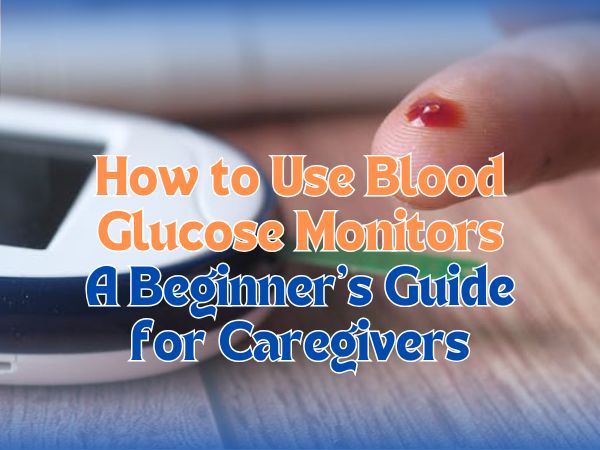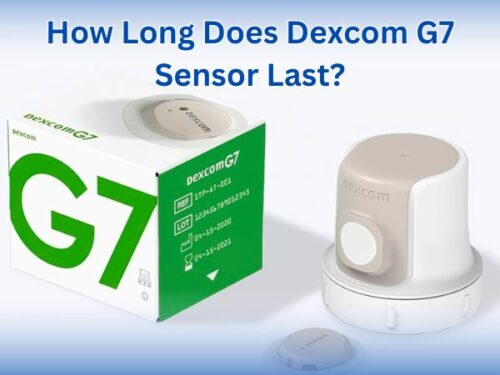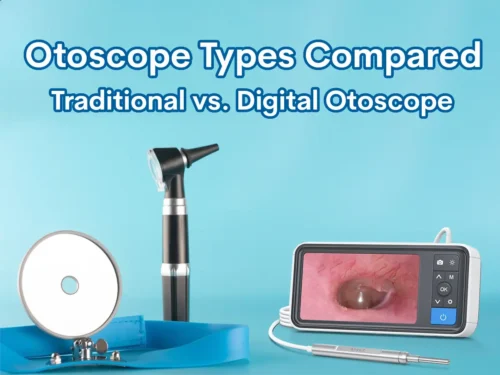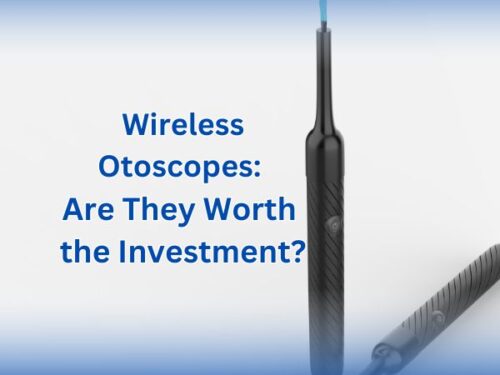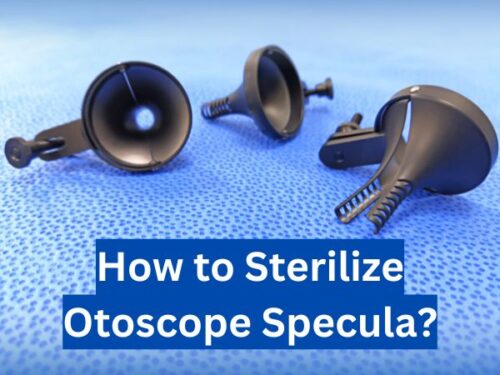How to Use Blood Glucose Monitors: A Beginner’s Guide for Caregivers
According to the Centers for Disease Control and Prevention (CDC), nearly 38.4 million Americans are suffering from diabetes. This accounts for approximately 12% of the US population. Many of these require glucose monitors to estimate their blood glucose levels (BGL) on a regular basis. In case of high or low blood sugar level, proper management is required. As these are the devices for day-to-day use, learning how to use blood glucose monitors is essential for the patients as well as the caregivers.

Blood sugar monitoring is essential for patients dealing with diabetes
In this regard, the following section covers a step-by-step guide that assists you in how to use blood glucose monitors as well as how to interpret your blood sugar reading.
How to Use Blood Glucose Monitors?
According to the American Diabetic Association (ADA), the following method should be used while learning how to use blood glucose monitors:
Choose an Ideal Time for Measuring Blood Glucose Level
While learning how to use blood glucose monitors, it is essential to learn which periods are ideal for taking a BGL reading. These include:
- After waking up/an overnight fasted state
- At bedtime
- Before having a meal or a snack
- Before or during performing critical tasks e.g. traveling alone, driving, etc.
Apart from the above, blood glucose levels should also be estimated if the patient experiences the symptoms of high and low blood sugar. In this case, the symptoms associated with low blood sugar level which are given as follows can give away the declining sugar levels:
- Feeling excessive hunger
- Trembling
- Sweating
- Dizziness
- Lightheadedness
- Headaches
- Confusion
- Difficulty in concentrating
- Fainting
- Seizures
When it comes to high blood sugar level, there is a need to measure BGL immediately. The symptoms in this case may include the following:
- Excessive hunger
- Increased thirst (Polydipsia)
- Irritation
- Headache
- Blurred vision
The following table shows the blood sugar levels in normal, pre-diabetic, and diabetic states:
| Categories | Fasting State
(After 8 hours of eating discontinuation) |
Fed State (2 hours postprandial or after having a meal) | |
| Minimum Value
(mg/dL) |
Maximum Value
(mg/dL) |
mg/dL | |
| Normal State | 70 | 90 | Less than 140 |
| Pre-Diabetic State | 100 | 125 | Between 140 to 180 |
| Diabetic State | 126 | Above 126 | Above 200 |

A glucose monitoring device and test strips are important for managing diabetes
Clean your Hands Thoroughly
Before learning how to use blood glucose monitors, make sure that the patient cleans her or his hands thoroughly using soap and water. Any trace of food or other substances can alter the blood glucose reading. If soap and water are not available, alcohol wipes can be employed.
Insert the Test Strip
Take an unused test strip and insert it into the blood glucose monitor.
Prepare the Lancing Device
To collect a blood sample from the patient, pricking of a finger is required. This is done by using a lancing device. Take an unused lancet and insert it into the lancing device.
Prick the Finger
Using this lancing device, prick your finger and let a small drop of blood build on the tip.
Load the Sample on the Test Strip
Take the glucose meter in which the test strip has been inserted. Touch the tip of this test strip with the drop of blood. Make sure to take enough blood so that the tiny sensors of the glucometer can measure BGL reading from it.
Clean the finger with the help of an alcohol pad.
Check the Results
Wait for a few seconds. The glucose meter will display your blood sugar level reading on the screen.

Blood glucose readings taken with a CGM device are displayed on your Smartphone app
Good to Know: Do’s and Don’ts
While learning how to use blood glucose monitors, keep in mind the following:
Do’s
- Always use a new lancet whenever you check your blood sugar level.
- Use the sides of your finger for taking a blood sample instead of its tip.
- Check the user’s manual of your device while learning how to use blood glucose monitors.
- Run quality control checks on your device. The recommended time is once every 24 hours.
Don’ts
- Never use expired test strips for taking blood glucose level.
- Never squeeze your finger to get a drop of blood.
- Avoid taking a blood glucose test when the battery of your glucose meter is low.

Learning how to use blood glucose monitors helps the patients to take the test by themselves
Blood Glucose Meter Brands at Health Supply 770: Features and Specifications
Blood glucose meters are the devices used for measuring blood sugar levels. These evaluate the blood sample, check if the BGL is in target ranges, and display the reading on their screen or on your phone through their Smartphone apps.
Therefore, understanding how to use blood glucose monitors is necessary because of their extensive usage. Once you learn how to use blood glucose monitors, the next step is to buy a good-quality device. Many different kinds of products are available at Health Supply 770 and have been detailed below along with their features and purchase links:
Dexcom G7 Continuous Glucose Monitor Sensor 1 Unit

US$129.88
Product Details
Dexcom G7 glucose sensor 1 unit is a continuous glucose monitor or CGM device that can be worn for 14 days. It has the capability to calibrate itself based on the factory-set algorithms. The sensor technology of the device has been improved as compared to its previous versions which has led to enhanced accuracy of the product.
Moreover, the device also sends customizable notifications whenever the blood glucose level of the patient is either extremely high or extremely low. Being water-resistant, the Dexcom G7 continuous glucose monitors can be worn in the shower as well. Overall, learning how to use blood glucose monitors is easy as these products are simple in design and construction.
OneTouch Verio Flex® Blood Glucose Monitoring System

US$47.88
Product Details
OneTouch Verio Flex® blood glucose monitoring system works by measuring BGL quickly followed by its rapid conversion into snapshots. This collected data can then be shared directly with your family members as well as your healthcare provider who can adjust your diabetes care plan accordingly.
The device works with Android phones and tablets as well as iPhones and laptops. Each pack of OneTouch Verio Flex® blood glucose monitoring system contains a OneTouch Verio Flex meter, a lancing device, ten sterile lancets, a quick start guide, an owner’s booklet, as well as a carrying case to hold all the components.
FreeStyle Precision Neo Blood Sugar Monitoring Meter Kit

US$52.88
Product Details
FreeStyle Precision Neo blood sugar monitoring meter kit is a combination of a blood glucose meter, a lancing device, 10 lancets, an owner’s guide, as well as a carrying case. The log book which comes with the device stores up to 1,000 tests and the device has a battery life enough to conduct up to 3,000 tests.
The method to use the device is easy. Moreover, the slim design and ultra-lightweight construction of the product also enable the user to carry it along while traveling. In addition, the product is budget-friendly but the test strips need to be bought separately.
GUIDEKIT Accu-Chek® Guide Care Kit

US$49.88
GUIDEKIT Accu-Chek® Guide Testing Strips

US$27.88
Product Details
GUIDEKIT Accu-Chek® guide care kit has a glucose meter that comes with a large display, easy-to-operate buttons, as well as high memory storage. The product pack also contains a lancet ejector along with new lancets. The carrying case stores the product as well as its accessories after every use.
The Accu-Chek® blood glucose test strips are also sold separately. These come in a spill-proof SmartPack vial. The automatic logging system for the results loads the BGL values on your Smartphone app. The product is reliable, affordable, as well as highly accurate. That’s why, it is the best choice if you are learning how to use blood glucose monitors.
Glucocard Vital Blood Glucose Meter Kit

Glucocard vital blood glucose meter kit
US$36.88
Product Details
Glucocard Vital blood glucose meter kit requires only a small blood sample size for the estimation of blood sugar level. It comes with test strips as well which are disposable and highly accurate in their BGL measurement. The lancing device is also comfortable and easy to use and is one of the best options for you if you are learning how to use blood glucose monitors.
The Glucocard Vital blood glucose measuring system can give the results within 7 seconds. Moreover, the measured readings can be stored for future tracking. The product is ideal for home use due to being simplicity and convenience.
mySentry Remote Glucose Monitor

US$4,984.88
Product Details
mySentry Remote glucose monitor is an ideal device for transmitting real-time glucose data as well as the status of the insulin pump when connected to a continuous glucose monitor. This product is especially good for use in diabetic children as the parents or guardians can measure their blood sugar level remotely from another room as well.
The system also gives audible alerts whenever the blood glucose levels fall below the normal range or exceed it. This feature can save the patient from possible health complications associated with prolonged abnormal levels of blood sugar. Moreover, the risk of hypoglycemia or extremely low blood sugar level is also prevented. Overall, the device is simple and easy to comprehend when it comes to learning how to use blood glucose monitors.
MiniMed® Guardian™ 3 Continuous Glucose Monitoring Sensor, with Six Day Wear Time, for 670G Insulin Pump

US$1,461.88
Product Details
MiniMed® Guardian™ 3 continuous glucose monitoring sensor is easy to use while learning how to use blood glucose monitors. The product has a sensor that can measure blood glucose levels after every 5 minutes. It can be worn for 6 days and needs to be replaced on the 7th day.
However, the compatibility of this continuous glucose monitor is only with the Medtronic MiniMed 670G insulin pump. Like the above-mentioned products, these MiniMed Guardian CGM systems also notify the user about the rising and falling levels of blood glucose.
*Note: The prices mentioned in the article are taken from the Health Supply 770 website. They may vary over time.

Using a continuous glucose monitor helps manage diabetes by doing BGL test daily
After learning how to use blood glucose monitors mentioned in the article, the next step is to purchase the product. These blood glucose monitors, along with many other medical supplies, can be ordered from Health Supply 770, a reliable name when it comes to medical products. They have a 30-day money-back guarantee and provide your products to you in the shortest possible time. Click the link given in the article to check out the wide range of blood glucose monitors.
Bottom Line
For diabetic patients, it is essential to check their blood sugar levels regularly. For this purpose, learning how to use blood glucose monitors is necessary so that a blood glucose log can be maintained. Based on this, the diabetes healthcare provider can then modify your treatment plan.
Using a blood glucose monitor is easy. You just need to follow the above-mentioned steps and you’ll be able to find out if your BGL falls within the healthy range or if it needs adjustment with a proper diabetes care plan. In this regard, the continuous glucose monitoring done by using a CGM device is even more convenient for the patients.
Overall, all kinds of glucose meters give reliable results and the choice narrows down to your preference as well as on the recommendation of your doctor. For purchasing different kinds of products once you learn how to use blood glucose monitors, reliable vendors like Health Supply 770 should be approached. They ensure the provision of quality products along with satisfactory services.
References
https://professional.diabetes.org/sites/dpro/files/2023-12/usingabloodglucosemeter.pdf

PhD Scholar (Pharmaceutics), MPhil (Pharmaceutics), Pharm D, B. Sc.
Uzma Zafar is a dedicated and highly motivated pharmaceutical professional currently pursuing her PhD in Pharmaceutics at the Punjab University College of Pharmacy, University of the Punjab. With a comprehensive academic and research background, Uzma has consistently excelled in her studies, securing first division throughout her educational journey.
Uzma’s passion for the pharmaceutical field is evident from her active engagement during her Doctor of Pharmacy (Pharm.D) program, where she not only mastered industrial techniques and clinical case studies but also delved into marketing strategies and management skills.










